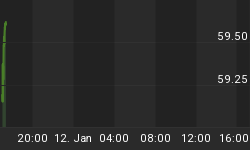Gold is now trading at a 17-year high and starting to catch the public's attention. I first turned bullish on gold in November 2000 when gold was trading around $280 per ounce. Most people thought I was crazy! Back then, people believed we were in a "new era", which was being powered ahead by the technology revolution! In the 1990's, the technology and telecom sector led by the NASDAQ had gone through the roof! Five years ago, the public was awe-struck with the onset of the new millennium and convinced that the NASDAQ would continue to rally forever! In such a modern environment, how could something as ancient as gold shine? Whenever I spoke positively about gold, I met with similar objections and arguments. Five short years later - how things change!
In order to predict gold's future, we must understand our monetary history. Only a few people realise that up until 1971, the US dollar was linked to gold. The gold price was fixed to the US dollar at US$ 35 per ounce. The amount of dollars in the system depended on the amount of physical gold. The US dollar was the world's reserve currency and all other currencies were pegged to the US dollar. Therefore, we had a beautiful equilibrium whereby there were no wild exchange rate fluctuations and gold was the anchor.
By the beginning of the 1960's, the US$ 35 per ounce gold ratio was becoming very difficult to maintain. Gold demand was rising and the US gold reserves were falling as a result of its ever increasing trade deficits, which the US continued to run with the rest of the world - old habits die hard! The system came under pressure when the French, under the leadership of Charles de Gaulle, began to send back the dollars earned from exporting to the US and demanded physical gold instead of Treasury debt. Under the terms of the Bretton Woods Agreement signed in 1944, France was legally entitled to do so.
Towards the end of the 1960's, the US faced the grim reality of either eliminating its trade deficit or depreciating the dollar against gold to reflect the actual situation. President Nixon decided to do neither. Instead, the US defaulted on its international obligations by failing to redeem its dollars into gold! On 15 th August 1971, Nixon closed the "Gold Window" and gold was knocked out of our monetary system. In 1973, the "new era" of paper currencies had arrived as currencies freely "floated" against each other. By the end of 1974, gold had soared from $35 to $195 an ounce!
Once gold was thrown out, nations were free to print as much money as they wanted! It is not surprising then to note that the money supply has shot up almost 20 times in just 34 years! That is a 20-fold increase in the amount of money floating around our planet.
During the 1970's, as the money supply continued to soar, the public began losing faith in the financial system. Back then, this excess liquidity found its way into tangible assets and manifested in rising consumer prices! During that time, Britain had to be bailed out by the IMF, the economy was in a severe recession, inflation was soaring and the public panicked and started exchanging dollars for hard tangible assets. This led to the great commodities boom and the gold price went to the moon! In fact, gold rose from $35 per ounce in 1971 to over $800 per ounce in 1980!
In early 1980, the Federal Reserve led by Paul Volker decided to tame inflation and raised interest-rates to almost 20%! This desperate measure had the desired effect as money flew out of tangibles and went back into the US dollar, lured by a very high yield. As interest-rates started easing in the early 1980's, financial assets such as stocks and bonds started to soar. This marked the beginning of a gigantic bull-market, which would span two decades! Over the same period, commodity prices remained under pressure and gold turned out to be a lousy investment.
Things began to change in early 2000 when the technology bubble burst and US deficits started spiralling out of control. Students of economic history immediately realised the benefits of owning gold during such a volatile time.
Over the past five years, gold has risen quite a lot but the economic imbalances have only got worse! America now faces record-high deficits and the outstanding debt exceeds 350% of GDP! The US government has two options - either it defaults or engages in massive inflation, which will depreciate its currency and eventually reduce its deficits. If history is any guide, you can be sure that the Fed will adopt the inflationary route. Whether it was the S&L Crisis in 1990, the Tequila Crisis in 1995, the Asian Crisis in 1997 or the Russian Crisis in 1998, the Fed always responded by creating massive liquidity. Accordingly, you can be sure that the policymakers will do anything possible to prevent an outright economic collapse. Over the years ahead, you can expect a massive surge in the money supply. Obviously, this will be extremely bullish for gold and all things tangible!
It is true that gold prices have already risen by more than 80%. However, this is peanuts compared to the 2500% surge we saw in the 1970's! Take a look at the chart presented below, which shows that gold (adjusted for inflation), peaked at $2,100 in 1980.

Source: www.thechartstore.com
At today's levels, gold is still undervalued and one of the cheapest assets you can buy. As the commodity bull-market gathers steam, gold will undoubtedly shine again. It is impossible to predict the ultimate high for gold but I can assure you that it will be much higher than today's depressed levels.
A lot more follows for subscribers...















